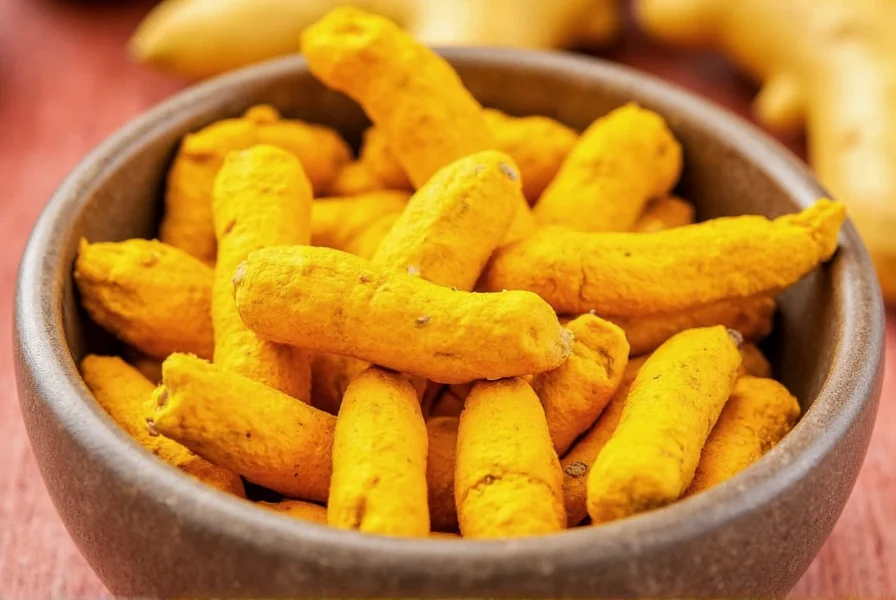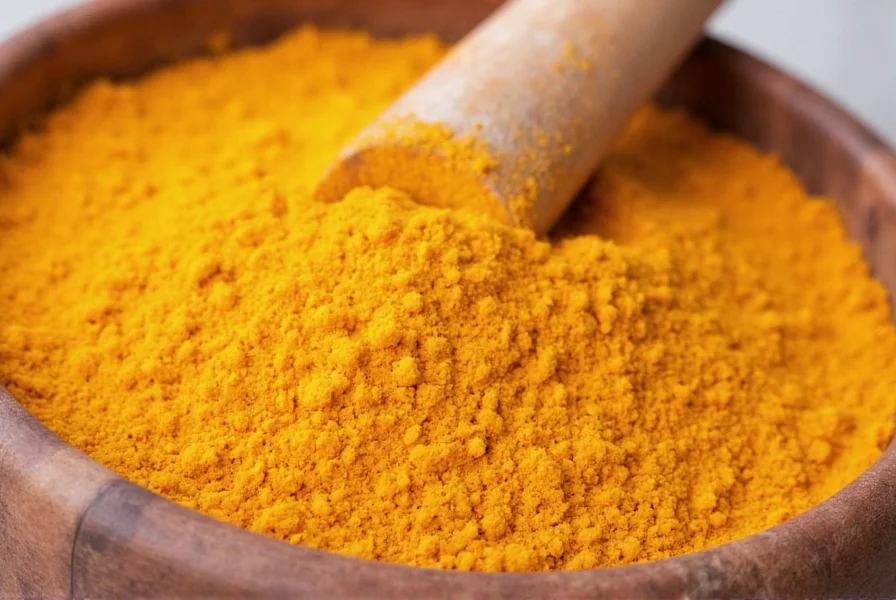Many people search for "curcuma ginger" expecting a single plant, but this term actually refers to the combination of two separate botanical powerhouses: turmeric (Curcuma longa) and ginger (Zingiber officinale). Understanding their individual properties and how they work together provides valuable insight into their potential health applications.
Understanding Curcuma (Turmeric)
Turmeric, scientifically known as Curcuma longa, is a rhizomatous herbaceous perennial plant belonging to the ginger family, Zingiberaceae. Native to the Indian subcontinent and Southeast Asia, turmeric has been used for thousands of years in Ayurvedic and traditional Chinese medicine. The vibrant yellow-orange compound responsible for turmeric's color and many of its health properties is curcumin, which typically makes up about 2-8% of turmeric by weight.
One significant challenge with curcumin is its poor bioavailability when consumed alone. Research shows that curcumin has low absorption rates, rapid metabolism, and quick systemic elimination. This is why many turmeric supplements include piperine (from black pepper) or are formulated with fats to enhance absorption.

Understanding Ginger
Ginger (Zingiber officinale) is another member of the Zingiberaceae family, with a long history of medicinal use across various cultures. The primary bioactive compounds in ginger are gingerols, particularly 6-gingerol, which give ginger its characteristic pungency and many of its therapeutic properties.
Unlike curcumin in turmeric, ginger compounds demonstrate better bioavailability. Ginger has been extensively studied for its effects on nausea, digestion, and inflammation. The compound 6-shogaol, formed when ginger is dried or cooked, also contributes to ginger's health benefits.
Scientific Evidence for Health Benefits
Both curcuma and ginger have been subjects of numerous scientific studies examining their potential health benefits. Let's examine the evidence for key areas:
| Health Benefit | Curcuma (Turmeric) Evidence | Ginger Evidence |
|---|---|---|
| Anti-inflammatory properties | Multiple studies show curcumin inhibits multiple inflammation pathways; comparable to some NSAIDs in effectiveness for certain conditions | Gingerols inhibit inflammatory cytokines; effective for reducing muscle pain and osteoarthritis symptoms |
| Digestive health | May stimulate bile production; limited evidence for digestive benefits alone | Strong evidence for reducing nausea, especially pregnancy-related and chemotherapy-induced; enhances gastric motility |
| Joint health | Significant evidence for reducing pain and stiffness in osteoarthritis | Moderate evidence for reducing osteoarthritis pain; may work through different mechanisms than turmeric |
Synergistic Effects: How Curcuma and Ginger Work Together
Research suggests that combining curcuma and ginger may create synergistic effects that enhance their individual benefits. A 2020 study published in the Journal of Medicinal Food found that a combination of turmeric and ginger extracts demonstrated greater anti-inflammatory effects than either compound alone.
The potential mechanisms for this synergy include:
- Complementary pathways: While curcumin primarily affects NF-kB inflammatory pathways, gingerols target different inflammatory mediators
- Enhanced bioavailability: Some evidence suggests ginger may improve the absorption of curcumin
- Broader spectrum of action: Together they may address multiple aspects of inflammation and oxidative stress
For those interested in natural approaches to inflammation management, understanding curcuma ginger anti-inflammatory properties becomes particularly valuable. The combination appears especially promising for chronic inflammatory conditions where multiple pathways are involved.
Safety and Considerations
Both turmeric and ginger are generally recognized as safe when consumed in culinary amounts. However, when used medicinally or in supplement form, several considerations apply:
Potential side effects: High doses of turmeric may cause gastrointestinal discomfort in some individuals. Ginger in large amounts can cause heartburn or mouth irritation. The combination of curcuma ginger supplement dosage should be carefully considered to avoid digestive upset.
Medication interactions: Both plants have blood-thinning properties, so they should be used cautiously with anticoagulant medications. Turmeric may interact with diabetes medications by potentially enhancing their effects. Those taking medications should consult healthcare providers before starting high-dose supplementation.
Special populations: Pregnant women should consult their healthcare provider before using therapeutic doses, though culinary amounts are generally considered safe. Those with gallbladder issues should exercise caution with turmeric as it may stimulate bile production.

Practical Usage Guide
Integrating curcuma and ginger into your wellness routine can be done through various approaches:
Culinary applications: Fresh turmeric and ginger can be added to smoothies, teas, soups, and stir-fries. For better curcumin absorption, always combine turmeric with black pepper (providing piperine) and a healthy fat like coconut oil or olive oil.
Supplement considerations: When selecting supplements, look for standardized extracts with specified curcuminoid and gingerol content. Quality curcuma ginger supplements often include absorption enhancers. The typical curcuma ginger dosage ranges from 500-2,000 mg daily of turmeric (providing 100-500 mg curcumin) and 1,000-2,000 mg of ginger.
Traditional preparations: Golden milk, a traditional Ayurvedic beverage combining turmeric, ginger, black pepper, and warm milk (dairy or plant-based), represents one of the most effective ways to consume these botanicals together, addressing both bioavailability and synergistic benefits.
Conclusion
The combination of curcuma (turmeric) and ginger represents a powerful pairing in the realm of botanical medicine. While they are often searched together as "curcuma ginger," understanding them as distinct yet complementary botanicals provides the clearest picture of their potential benefits. Current research supports their use for inflammation management, digestive health, and joint support, with evidence suggesting their effects may be enhanced when used together.
As with any natural remedy, realistic expectations are important. These botanicals work gradually and are best viewed as part of a comprehensive approach to wellness rather than quick fixes. Those interested in curcuma ginger health benefits should focus on consistent, moderate consumption rather than high-dose短期 use, and always consult healthcare professionals when addressing specific health conditions.
Frequently Asked Questions
What's the difference between curcuma and ginger?
Curcuma refers to turmeric (Curcuma longa), which contains curcumin as its primary active compound, while ginger (Zingiber officinale) contains gingerols. Though both belong to the same plant family (Zingiberaceae), they have different chemical profiles, health benefits, and traditional uses. Turmeric is primarily valued for its anti-inflammatory properties, while ginger is best known for digestive and nausea-relieving effects.
Can I take curcuma and ginger together safely?
Yes, curcuma and ginger can generally be taken together safely, and research suggests they may have synergistic effects. However, both have mild blood-thinning properties, so those taking anticoagulant medications should consult their healthcare provider. The combination is generally well-tolerated, but high doses may cause digestive discomfort in some individuals.
What's the optimal curcuma ginger dosage for inflammation?
Research suggests effective doses for inflammation management typically include 500-1,500 mg of standardized turmeric extract (providing 100-250 mg curcumin) and 1,000-2,000 mg of ginger daily. For best results, divide the dosage throughout the day and always consume turmeric with black pepper and healthy fats to enhance curcumin absorption. Consult a healthcare provider for personalized recommendations.
How long does it take to notice benefits from curcuma ginger?
Most people begin noticing subtle benefits from regular curcuma ginger consumption within 2-4 weeks, though significant effects for chronic conditions may take 8-12 weeks. The timeline varies based on individual factors, the specific health concern, dosage, and formulation. Consistent daily use is more important than high occasional doses for achieving optimal results from curcuma ginger health benefits.
Does cooking affect the benefits of curcuma and ginger?
Cooking can both enhance and reduce certain benefits. Heating turmeric with fats increases curcumin absorption, while prolonged high heat may degrade some compounds. For ginger, cooking converts gingerols to shogaols, which have different but still beneficial properties. To maximize curcuma ginger anti-inflammatory properties, add turmeric toward the end of cooking with healthy fats and black pepper, while ginger can be added earlier in the cooking process.











 浙公网安备
33010002000092号
浙公网安备
33010002000092号 浙B2-20120091-4
浙B2-20120091-4